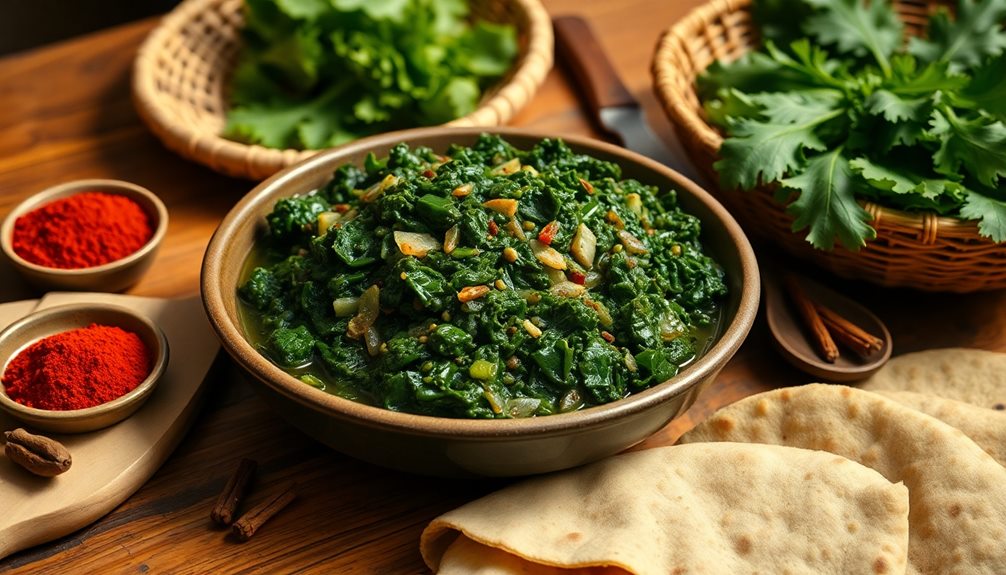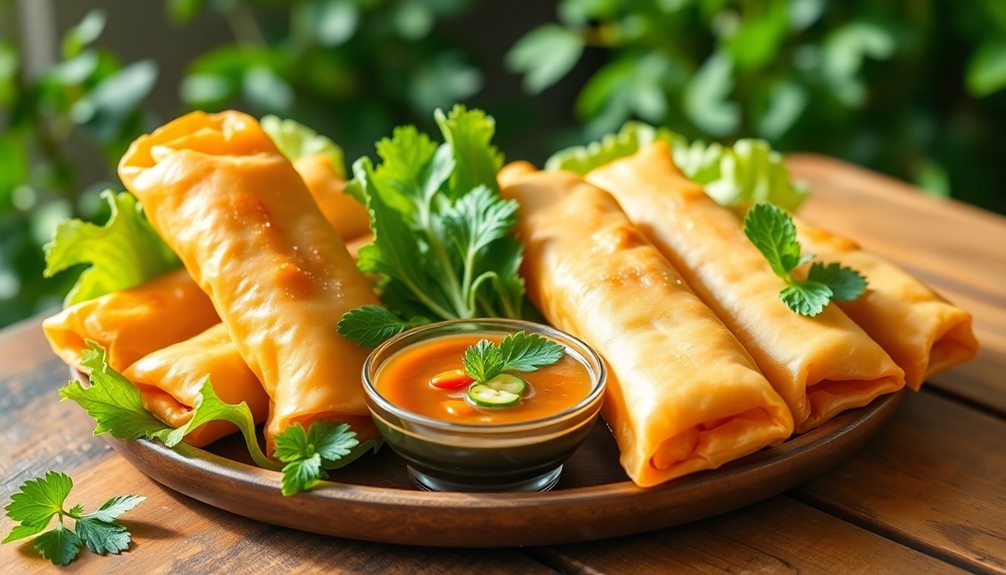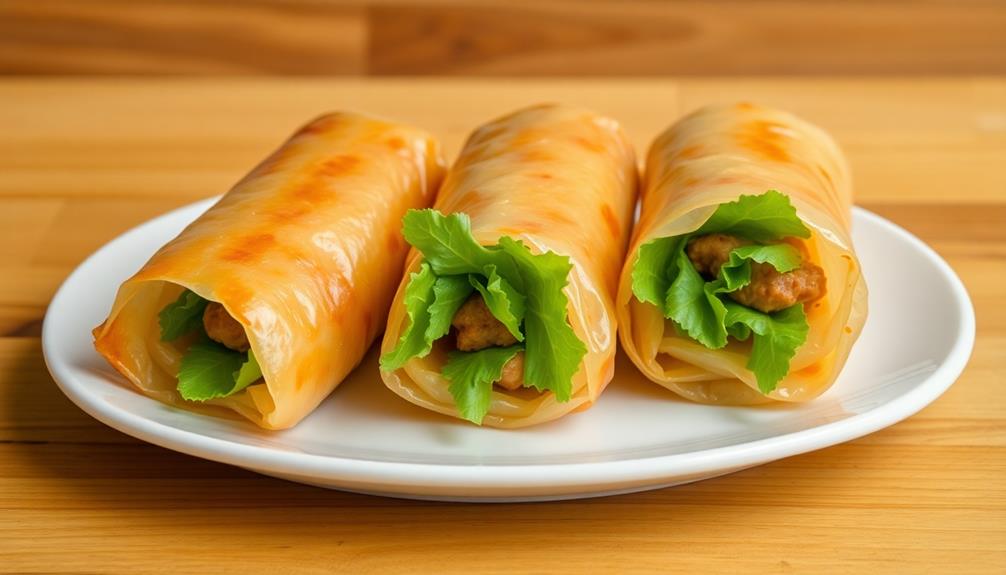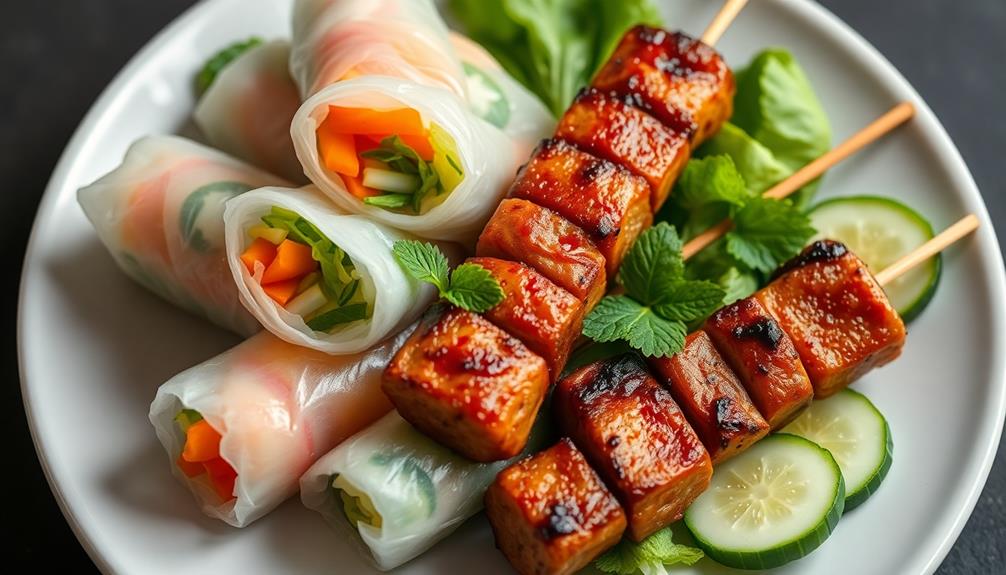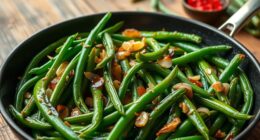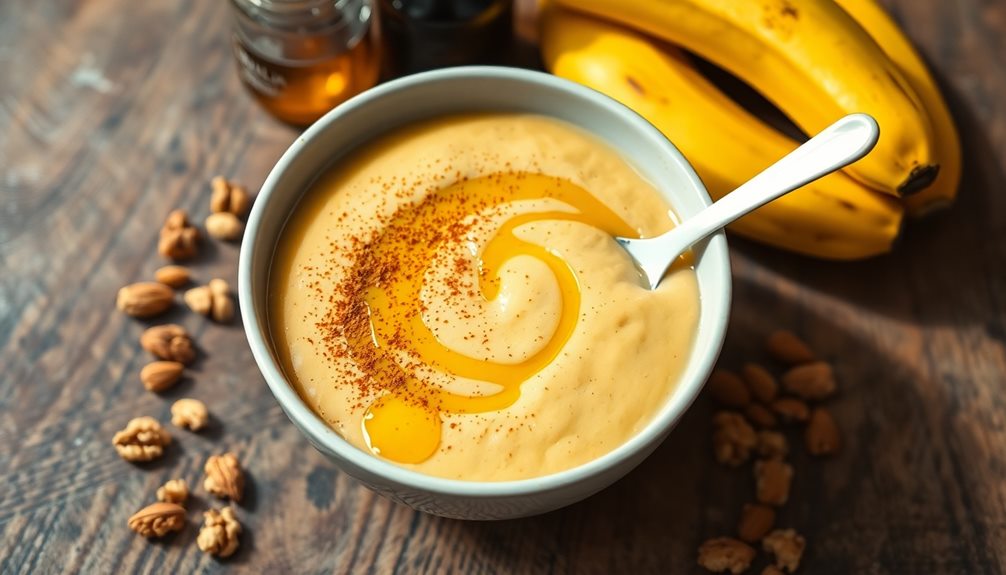Get ready to dive into the savory world of Nem Chua, a beloved Vietnamese culinary delight! This fermented pork snack boasts a tantalizing blend of sweet, sour, and umami flavors that'll have your taste buds dancing. Originating in northern Vietnam centuries ago, Nem Chua has become a cultural staple, often shared during festive gatherings. The key lies in the meticulous fermentation process, where the pork develops its signature chewy texture and captivating aroma. Wrap it in banana leaves, pair it with pickled veggies, and prepare to embark on a flavor adventure that'll leave you craving more. Want to learn the steps to craft this Vietnamese treasure at home?
Key Takeaways
- Nem Chua is a traditional Vietnamese fermented pork snack with a unique savory, sour, and umami flavor profile.
- The fermentation process is essential for developing the distinct taste and chewy texture of Nem Chua.
- Nem Chua is often served with pickled vegetables, enhancing the contrast of flavors and textures.
- Nem Chua is a culturally significant dish, widely enjoyed during festive occasions and family gatherings in Vietnam.
- Preparing Nem Chua at home involves a straightforward process, allowing for customization to personal taste preferences.
History
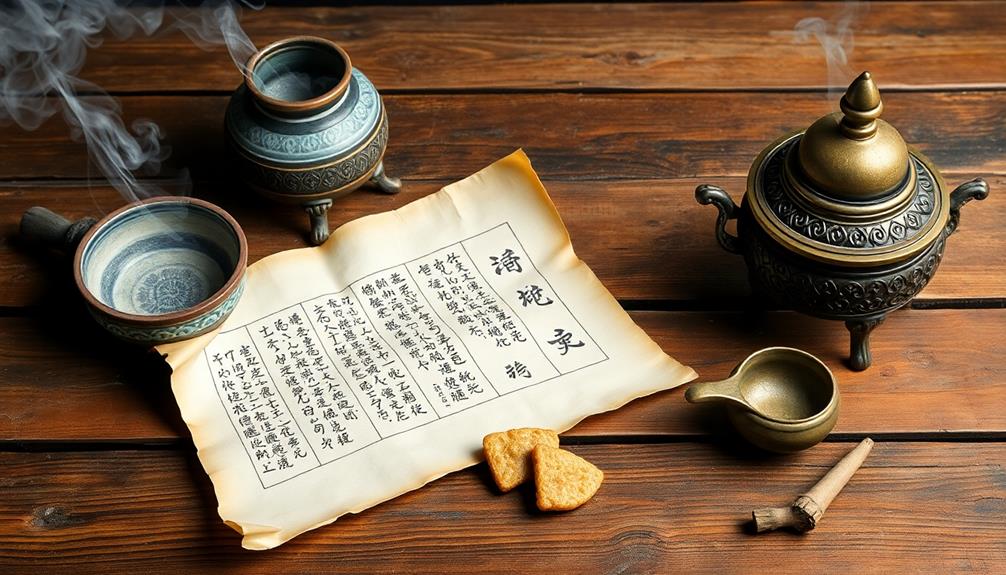
Nem Chua, the beloved Vietnamese fermented pork sausage, traces its roots back to the northern regions of the country. This savory snack has been a beloved part of Vietnamese cuisine for centuries, passed down through generations.
The origins of Nem Chua can be traced to the 15th century, when the dish was first mentioned in historical records. Back then, it was a simple affair – just pork, salt, and rice bran. As the dish evolved, additional ingredients like chilies, garlic, and fish sauce were added, creating the distinct flavor profile we know and love today.
Traditionally, Nem Chua was a staple food for farmers and laborers, providing a protein-packed and portable snack. Over time, it became a beloved part of Vietnamese culture, often served at festivals, celebrations, and family gatherings.
Today, Nem Chua remains a cherished treat, enjoyed by people of all ages across the country.
Recipe
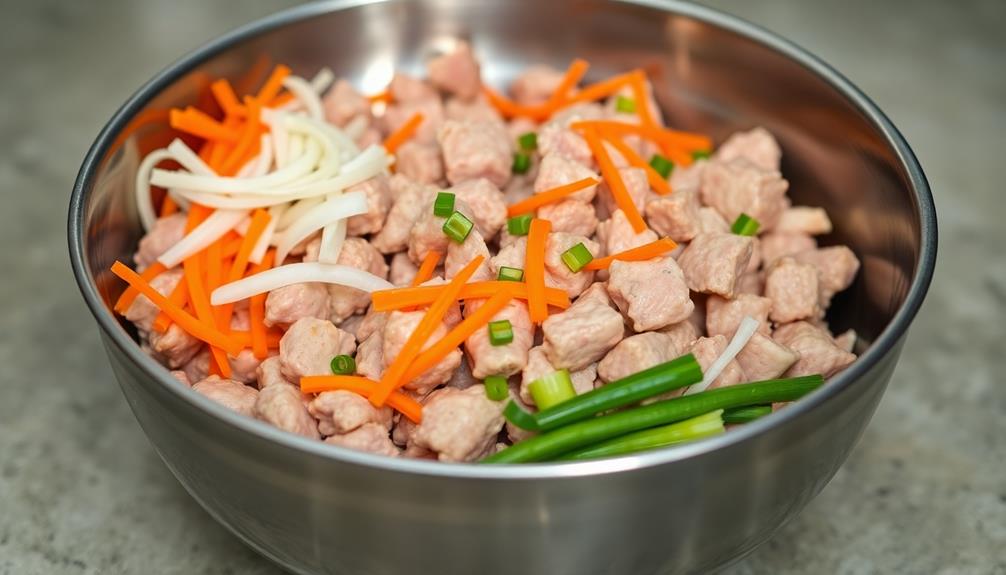
Nem Chua, also known as Vietnamese cured meat, is a popular snack food in Vietnam. It's a fermented meat product that has a unique and complex flavor profile, combining the savory, salty, and slightly sour notes of the cured meat with the crunch of vegetables and the heat of chili peppers.
The traditional method of making Nem Chua involves carefully selecting and preparing the ingredients, followed by a meticulous curing process that can take several days. While it may seem like a laborious task, the resulting flavor and texture of the finished product make it well worth the effort.
Ingredients:
- 2 lbs ground pork
- 1 tbsp salt
- 1 tbsp sugar
- 1 tbsp fish sauce
- 1 tsp ground black pepper
- 2 cloves garlic, minced
- 2 Thai chili peppers, finely chopped
- 1 cup shredded carrots
- 1 cup shredded daikon radish
- 1 cup finely chopped green onions
- Banana leaves or rice paper wrappers, for serving
Instructions:
In a large bowl, combine the ground pork, salt, sugar, fish sauce, black pepper, garlic, and Thai chili peppers. Mix well until all the ingredients are evenly distributed.
Cover the bowl and refrigerate for at least 24 hours, or up to 48 hours, to allow the flavors to develop.
After the curing process, add the shredded carrots, daikon radish, and green onions to the pork mixture. Stir to combine.
Divide the mixture into small portions and wrap them in banana leaves or rice paper wrappers. Secure with toothpicks or string.
Tips:
For best results, let the wrapped Nem Chua ferment at room temperature for an additional 2-3 days before serving. This will further enhance the flavor and texture of the cured meat.
Serve Nem Chua as a snack or appetizer, accompanied by fresh herbs, vegetables, and dipping sauces like fish sauce, chili sauce, or nuoc cham.
Cooking Steps
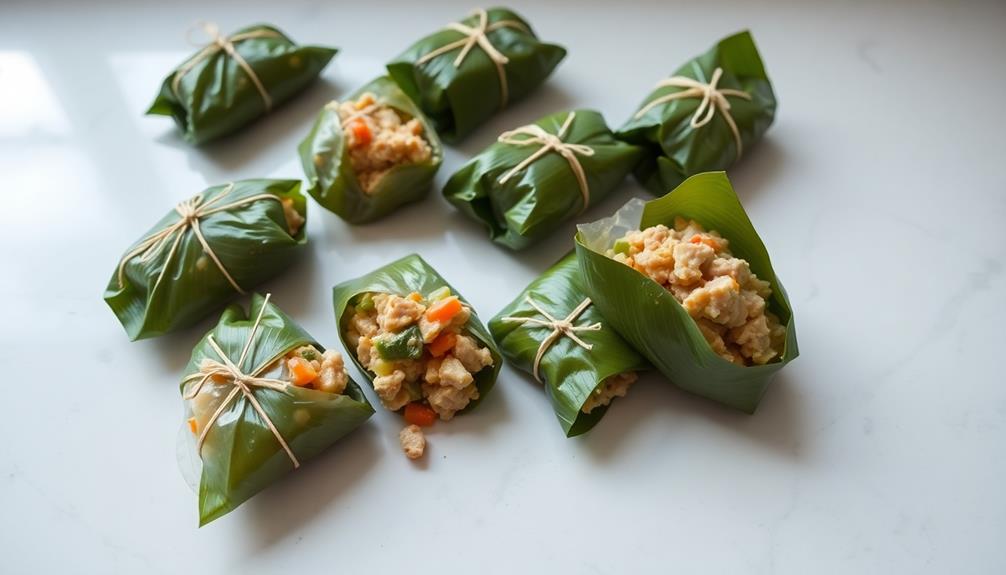
Combine the juicy pork, fragrant herbs, and zesty spices in a bowl.
Wrap the pork mixture tightly in banana leaves and let it ferment for 3 to 5 days.
Once it's ready, slice the flavorful, fermented pork and serve it alongside tasty pickled veggies.
Step 1. Combine Pork, Herbs, and Spices
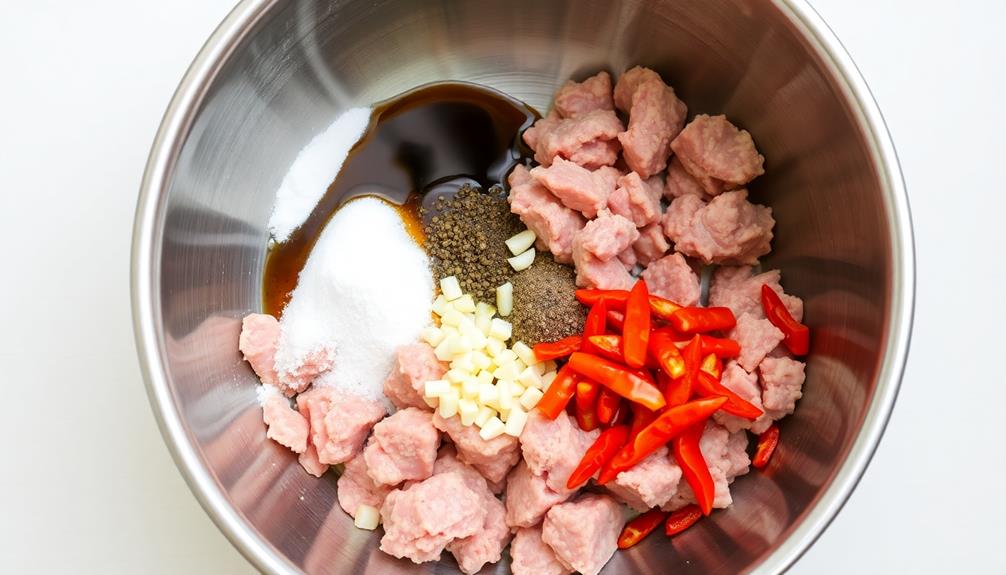
With the pork, herbs, and spices at the ready, you can now bring them together to craft the quintessential filling for the Vietnamese nem chua. First, dice the pork into small, bite-sized pieces, ensuring even cooking and texture.
Next, chop the fragrant cilantro, savory garlic, and zesty lime leaves, blending their flavors to create a delightful aroma. Don't forget the warm spices – a pinch of ground black pepper and a dash of chili powder will add a subtle kick to the mixture.
Now, combine all the ingredients in a large bowl, using your hands to thoroughly mix them together. Knead the mixture, working the flavors into the pork until it's well-incorporated.
You'll want the filling to be cohesive, with the herbs and spices evenly distributed. Taste as you go, adjusting the seasoning to your liking. With the perfect balance of salty, sour, and spicy, you're ready to stuff the nem chua and begin the fermentation process.
Step 2. Wrap Pork Mixture in Banana Leaf
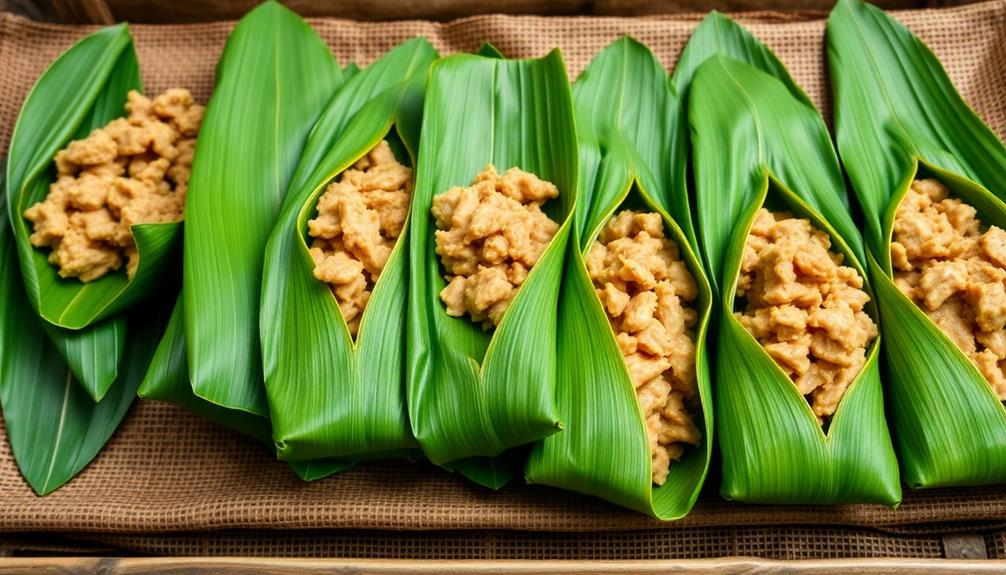
Grab a clean banana leaf and gently lay it flat on your work surface. This large, green leaf will act as the wrapping for your savory pork mixture.
Spoon a generous portion of the seasoned pork onto the center of the leaf. Fold the sides of the leaf over the pork, then roll it up tightly, creating a neat little package. Secure the roll with a toothpick or a thin strip of the leaf.
Now, repeat this process with the remaining pork mixture and leaves. Line them up neatly as you go. These handheld wraps are perfect for sharing with friends and family at your next gathering.
The fragrant banana leaf adds an extra layer of flavor and aroma. Once your nem chua are all wrapped up, you're ready for the final step – fermentation! Get ready to enjoy this delicious Vietnamese specialty.
Step 3. Ferment Wrapped Pork for 3-5 Days
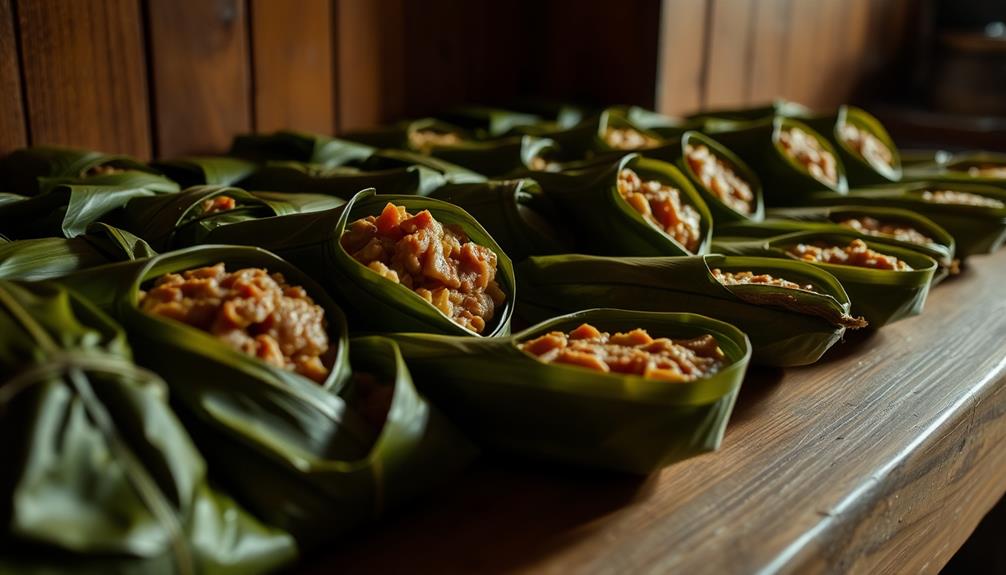
To ferment the wrapped pork, place the neatly arranged nem chua packages in a large, clean container. Cover them completely with a brine solution made from salt and water. Be sure the pork is fully submerged.
Now, let the container sit in a warm spot for 3-5 days. As the pork ferments, you'll notice a tantalizing sour aroma. This is a good sign – the flavors are developing!
During this time, you'll need to check on the container daily. Skim off any foam or scum that rises to the surface. This helps keep the fermentation process healthy.
When the 3-5 day mark arrives, your nem chua is ready! The pork should have a firm, chewy texture and a delightful sour-savory taste. Unwrap the leaves and enjoy this classic Vietnamese snack. The fermentation process has transformed the pork into a delectable treat!
Step 4. Slice Fermented Pork Before Serving
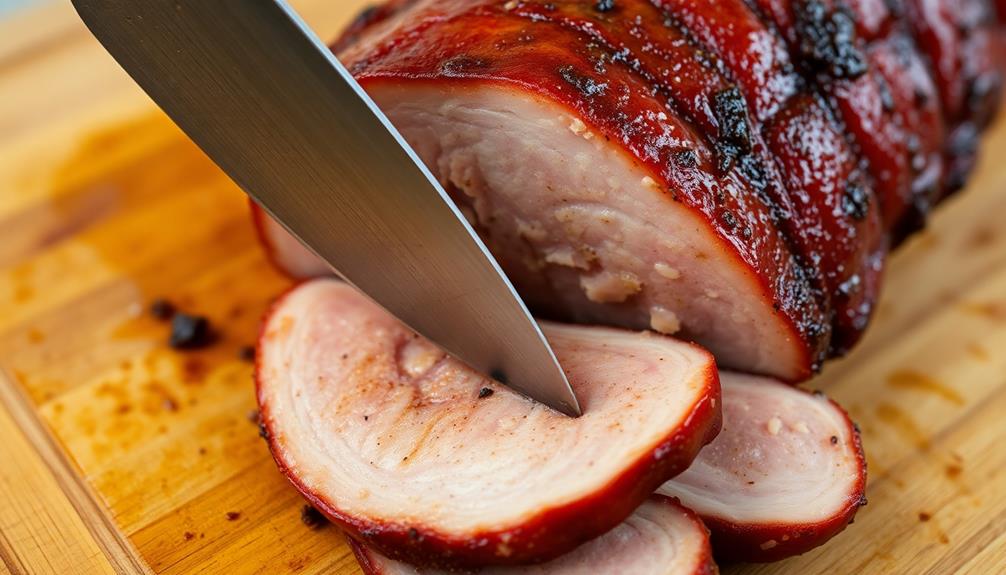
The fermented pork's firm, chewy texture and delightful sour-savory flavor are ready to be enjoyed. Before serving, you'll want to slice the pork into thin, bite-sized pieces. This allows everyone to easily pick up and savor each delectable morsel.
First, grab a sharp knife and carefully slice the fermented pork log into discs about 1/4-inch thick. Try to make the slices as even as possible for a neat, uniform presentation. If the pork seems a bit stubborn, don't be afraid to apply a gentle rocking motion to the knife as you cut through.
Once sliced, arrange the pork pieces on a serving platter or plate. You can garnish them with:
- Thinly sliced chilies for a pop of color and heat
- Chopped cilantro or mint leaves for a fresh, herbal note
- Crushed peanuts for a satisfying crunch
Now your Vietnamese nem chua is ready to be shared and savored by all! The combination of flavors and textures is truly irresistible.
Step 5. Serve With Pickled Vegetables
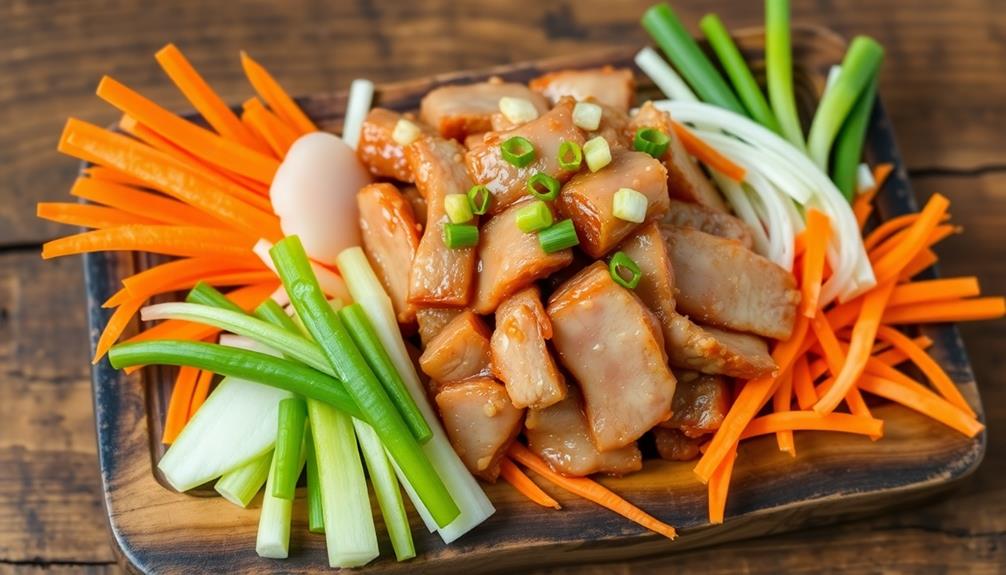
Pairing your sliced Vietnamese nem chua with a selection of pickled vegetables takes the dish to new flavor heights. The tangy, crunchy veggies provide a perfect foil to the rich, savory pork. Try thinly sliced carrots, daikon radish, and cucumbers – they'll add a refreshing zing that balances the bold fermented taste of the nem chua.
Prepare the pickled vegetables in advance for maximum flavor. Simply mix the sliced veggies with a brine of vinegar, sugar, and salt. Let them sit for at least 30 minutes, or up to a few days in the fridge. The longer they pickle, the more intense the flavors will become.
Arrange the pickled veggies on a platter alongside your sliced nem chua. Encourage your guests to build their own little bites, layering the pork and crunchy veggies on a crisp lettuce leaf or rice paper wrap.
The contrasting textures and tastes will delight your senses and have everyone coming back for more.
Final Thoughts
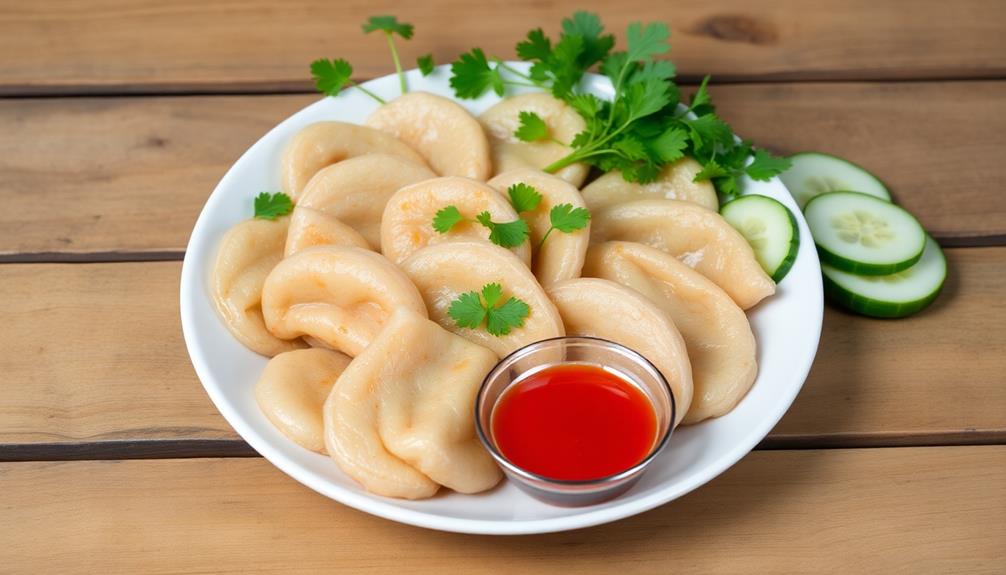
Ultimately, Nem Chua's versatility and captivating flavors make it a Vietnamese culinary gem. You can enjoy this savory fermented snack any time, whether as an appetizer, a quick bite, or even a meal accompaniment.
Its complex taste is sure to delight your senses – the perfect balance of sweet, sour, and umami.
What's more, Nem Chua is incredibly easy to prepare at home. With a bit of patience and the right ingredients, you can recreate this beloved treat and share it with family and friends.
Imagine the joy of gathering around a table, dipping into the tangy pork, and savoring each flavorful bite. It's a moment of pure Vietnamese culinary bliss.
Frequently Asked Questions
How Long Does It Take to Ferment Vietnamese Nem Chua?
It typically takes 2-3 days to ferment Vietnamese nem chua. The fermentation process allows the flavors to develop and the texture to become firm. Be patient, as rushing it won't give you the same authentic taste.
What Are the Health Benefits of Eating Vietnamese Nem Chua?
Eating Vietnamese nem chua can provide you with beneficial probiotics, boost your immune system, and aid digestion. It's also a good source of protein and may even help reduce inflammation in your body.
Can I Store Leftover Vietnamese Nem Chua, and if So, How?
Yes, you can store leftover Vietnamese nem chua. Keep it in an airtight container in the refrigerator for up to a week. The fermentation process will continue, so the flavor may change slightly, but it'll still be tasty.
Is Vietnamese Nem Chua Safe for Pregnant Women to Consume?
Consuming fermented foods like Vietnamese nem chua during pregnancy is generally safe, but it's best to consult your doctor. They can provide personalized guidance on any potential risks or precautions you should consider.
Where Can I Purchase the Necessary Ingredients to Make Vietnamese Nem Chua?
To make Vietnamese nem chua, you can purchase the necessary ingredients like ground pork, rice paper, and spices from Asian grocery stores or online specialty retailers. Be sure to follow proper food safety guidelines when handling raw meat.

